#early byzantine
Text
On one level the book is about the life of a woman who is hardly more than a token in a great epic poem, on another it’s about how history and context shape how we are seen, and the brief moment there is to act between the inescapable past and the unknowable future.
Perhaps to write Lavinia Le Guin had to live long enough to see her own early books read in a different context from the one where they were written, and to think about what that means.
-Jo Walton
#thinking of how her last four novels between 2004 and 2008 show a progressive blossoming of interest in classical literary traditions#following nearly half a century's worth of a career where she seems to actively avoid the influence of classical or medieval europe#idk. but i think this explains annals of the western shore as much as lavinia.#she gets so interested in what it means to share the same stories across space and time (and class and gender and nationality)#to be united in a community by having the same poetry#and in such an obvious way thinking about classics as a discipline is an incredible way to work through that#and i do think its an interest that must come out of having witnessed her own work unite people in community across time#if you're talking about the way stories and poems bring people together across time...#i read the texts passed on to me by renaissance humanists and 19th century philologists and byzantine monks and late antique scribes...#and they're the same across time and space but they're also not#and to have seen her own work reach people across space and time and be the same but also not... that must have been incredible#so: did living long enough to see her own early books read in a different context and to think about what that means#drive her to think about classical literature as she clearly was for the better part of a decade?#mine#reception#anyway i gotta think about this and email [redacted] tomorrow
28 notes
·
View notes
Photo




Byzantine Marble Reliquary with Pillars
Ca. 300-900 AD
A drum-shaped marble chest in the form of a tholos surrounded by eight columns with simple capitals, arcades between the pillars with elegant openwork foliate tracery; each tiered capital with a vertical socket for the attachment of a lid; the interior showing tooling. Reliquaries were containers for storing and displaying relics, such as bones, pieces of clothing or an object associated with a saint or other religious figure, in a church from the early Christianity onwards. Starting from the simple forms of chests in late Antiquity, they developed to various types depending on the relics they contained. During the Reformation, a large number of reliquaries were destroyed by Calvinists and as a result the number of original, especially early specimens, is limited. Interestingly, our reliquary has a hole in its bottom, which can be related to the practice of pouring oil into a container of relics of a saint or saints, which was then collected into pilgrim flasks.
Size: L:250mm / W:375mm ; 25.35kg.
#Byzantine Marble Reliquary with Pillars#Ca. 300-900 AD#marble chest#ancient artifacts#archeology#archeolgst#history#history news#ancient history#ancient culture#ancient civilizations#early christianity
197 notes
·
View notes
Text


Crowley helping me with my Art History homework

He has opinions on Early Christian and Byzantine artworks.
#my worm on a string crowley#crowley#crowley good omens#good omens#worm on a string#early christian and byzantine art history#academics
17 notes
·
View notes
Text

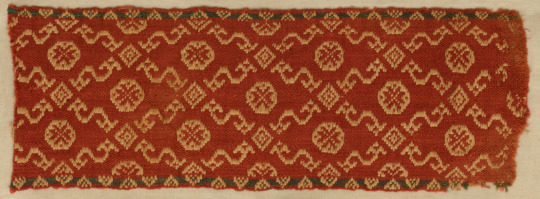



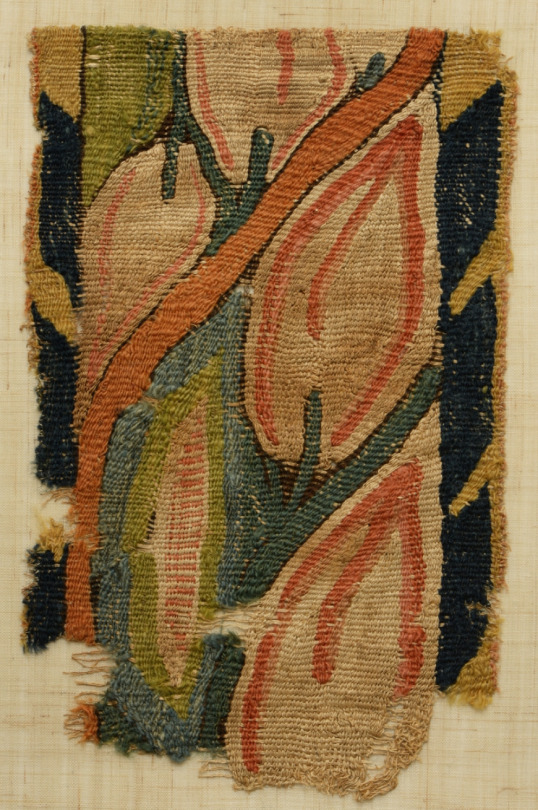
Fragments of Byzantine textile work, 2nd- 8th century CE. Mostly silk or wool. Egypt and Byzantium
#byzantine#textiles#historic textiles#silk#wool#byzantium#egypt#early medieval#east roman empire#textile art#never speak to me or my duck ever again
72 notes
·
View notes
Text
god i love this book. Byzantine monk beefs with dead pagan guy in the replies. he's so mad;
"1.1 ad Zos. 2.7.1 (f. 28r) After his account of the reign of Diocletian (284–305), which is missing from the manuscript, Zosimos digresses on the ludi saeculares and quotes a Sibylline oracle to prove his contention that the empire survived so long as these rites were performed.
Thus, as the oracle says and is only true, after all, while all this was observed according to tradition, the Roman empire was safe and the Romans maintained their control over what we might call our entire global empire. But once this festival was neglected after Diocletian’s abdication, the empire gradually collapsed and was imperceptibly barbarized.
The festival ought to have been celebrated in 313, but Constantine and Licinius neglected it, thus “matters were bound to come to their present unhappy state.”
Basileios the monk [responds]: This foul man assumes falsehoods as the truth and draws impossible conclusions as if they were possible. He says, “as per the oracle and what is only true.” But truth is not what the oracle spoke, nor were these rites performed according to a divine tradition, nor were they such as to survive to the very end. Even after this festival of yours was neglected, the empire of the Romans continued to rule over our global empire for no less a time than when this festival, which God hates, was observed. As nothing in this world of the senses is immutable, and even your Plato says that change is the mother of all things, how would it be possible, you impious man, for mutable and perishable men to hold a mutable and perishable global empire unchanged for the rest of time? But know that it is not atheists but Christians who hold it. Reader: see that you are not carried away by his argument. This impious writer bursts out with these comments against proper religion in order to make Christianity seem responsible for the barbarization of the Roman empire, and at the same time he says these things to open the door for his invective against the great and august Constantine."
2 notes
·
View notes
Photo
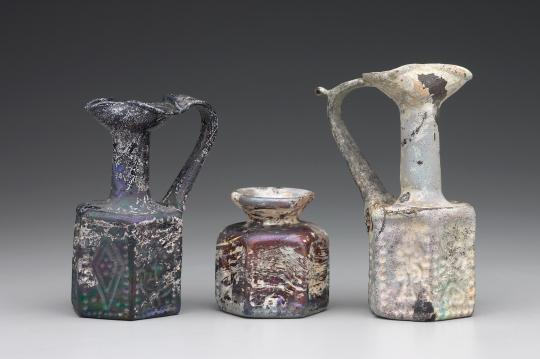
Hexagonal Jug / Late 6th–7th century A.D./ Near Eastern Mediterranean, Palestinian, Jerusalem(?) / Late Roman or Early Byzantine / Mold-blown glass, transparent dark brown / 16.5 × 11.2 × 7.2 cm. x
40 notes
·
View notes
Text


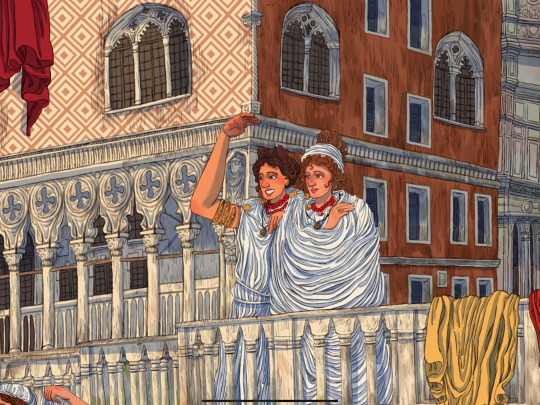

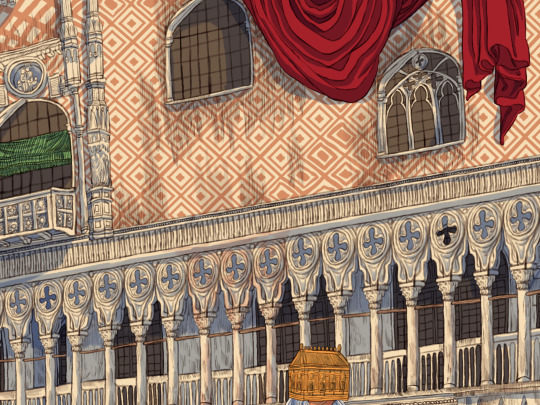
“Come, my love, be one with the sea 🌿🌊”
Had been inspired from tons of legends of merfolk/sirens lately (especially those of “merman asking hand in marriage with mortal women” in some Scandinavian and Asian mythologies) + obscure stories of forgotten sea deities of Ancient Greco-Roman mythology and their later depictions in Italian Renaissance, too. (such as Triton, the sea messenger son of Poseidon and Amphitrite; the familiar Nereids, 50 daughters of Nereus and Doris; and older gods such as Okeanos and Tethys, primordial Pontos and Thalassa, etc.)
#had been finished this illustration for a long time but now having the courage to post this#naturecore#ocean#oceancore#seacore#ancient greek#somewhere upon the stairs of Palazzo Ducale#italian renaissance#golden sunset aesthetics#the nereids#sea nymphs#triton#the son of Poseidon and Amphitrite himself#he and his mother trying to finding some fashionable Italian Renaissance clothes for him just fro marrying this mortal woman#but he ended up looking like a Late Roman/an Early Byzantine instead
95 notes
·
View notes
Note
hello guys welcome to the coolest blog in the entire world what is going AWN in olive land
girl help i’m drowning
#my art history capstone is due feb 24 and my honors thesis has things due every other week#buuuut i had a senior celebration on friday for 100 days till graduation and that was fun!#im making my profs gifts and starting super early bc i have no time but want them to get crochet presents#a granny square scarf with a byzantine inspired star motif for my art history advisor#and a lace shawl for my biology advisor#how are YOU.#from me#girlstressed
2 notes
·
View notes
Text
Dolce & Gabbana a/i 2013/14
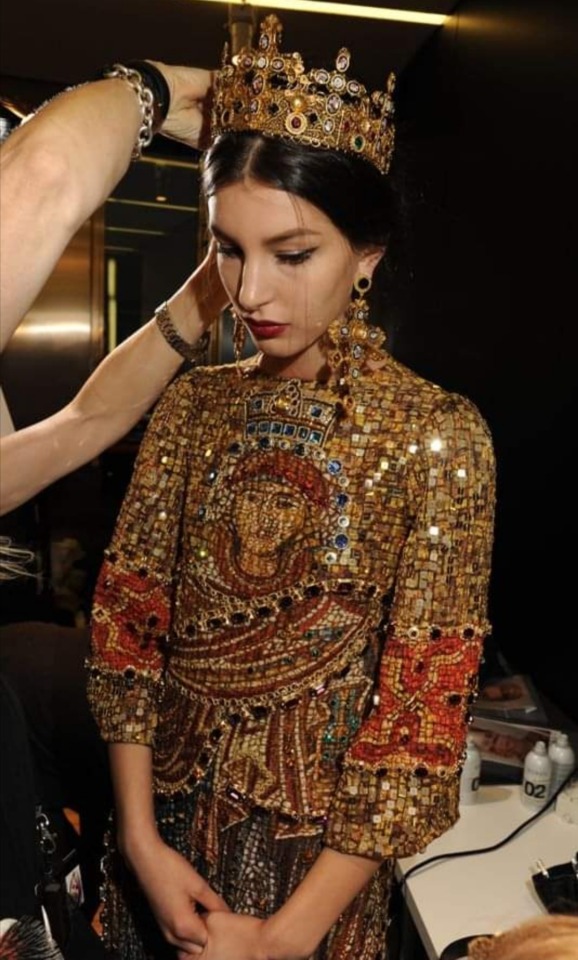
10 notes
·
View notes
Text
TikTok really trying to give me "thinking of the Roman Empire" dysphoria
#sorry that I think the crisis of the third century is interesting#early christian heresies are fun to read about and that's gonna invole rome a lot of the time#this is also roman republic and byzantine empire erasure#(yes I know the byzantine empire is just the eastern roman empire)
2 notes
·
View notes
Text

[ID: dark photo of lightning striking a nighttime sea. End ID]
hathym: augur of the second wave. cleric of tsinha, our lady of the lightning lance. soldier, sailor, setting sun.
i’m playing my dwarven tempest cleric for the first time and wanted to share my boy’s playlist <3 (under the cut!)
various storms and saints - florence + the machine - and the air was full / of various storms and saints / parading in the streets / as the banks began to break
hurricane - halsey - and there's a storm you're starting / i'm a wanderess, i'm a one night stand / don't belong to no city, don't belong to no man / i'm the violence in the pouring rain / i'm a hurricane
sky full of song - florence + the machine - grab me by my ankles, i've been flying for too long / i couldn't hide from the thunder in a sky full of song / hold me down, i'm so tired now / aim your arrow at the sky
bitter water - the oh hellos - i feel it in my blood / in the fire and the flood / the beast that can't be killed / even now you mark my steps / lovely bitter water
ship to wreck - florence + the machine - did i build a ship to wreck? / good god, under starless skies/ we are lost, and into the breach, we got tossed / and the water is coming in fast
deep water - american authors - when it pulls me under / will you make me stronger? / will you be my breath through the deep deep water?
casualty - lawrence - i'm in a war / i fight my history / it's hard to ignore / the thing that used to be / you look at me now / but i wonder if you see / that i'm swimming in the past / and you're wading patiently
ship in a bottle - fin - you set sail alone, there is no crew / no one on the deck who can help you / this is all your own battle to win / this is your ship, and you are the captain
where do we go - lindsey stirling ft. carah faye - now that i'm older, now that it's colder / day after day, like a wave after wave / where do we go, oh / when our prayers are answered, but the answer is no?
see the day - the altogether - the sea is bubbling beyond the shore / i can't quite tell what i'm hoping for / dive out of nothing and into more
#i'm so excited to play this guy#it's a late roman/early byzantine inspired campaign and my first longer-running offline#also the sea and storm imagery goes hard in this playlist imho#hathym#theladyth#sola described#sola said
11 notes
·
View notes
Text
“The torc or maniakion has been the subject of several studies yielding different conclusions, but it is generally accepted that it was introduced to the Roman army by the Gauls and Persians. The Romans adopted the torc, but progressively gave it a more specific significance as a military decoration and then as a mark of office.’
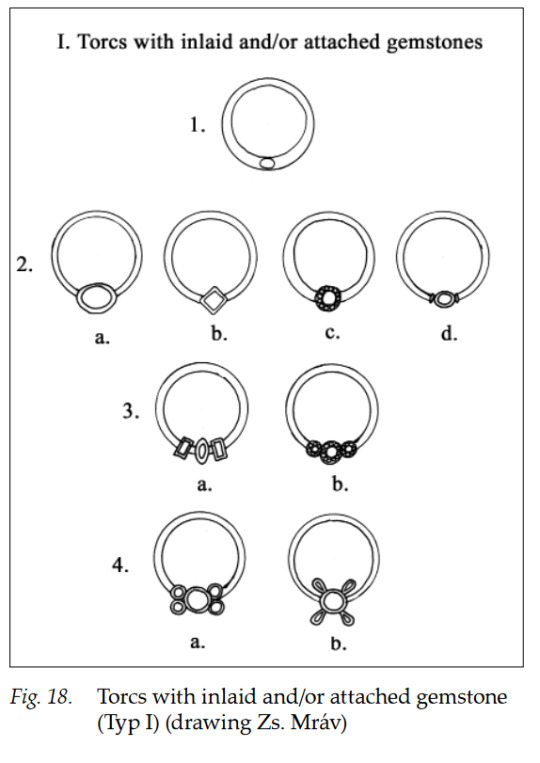
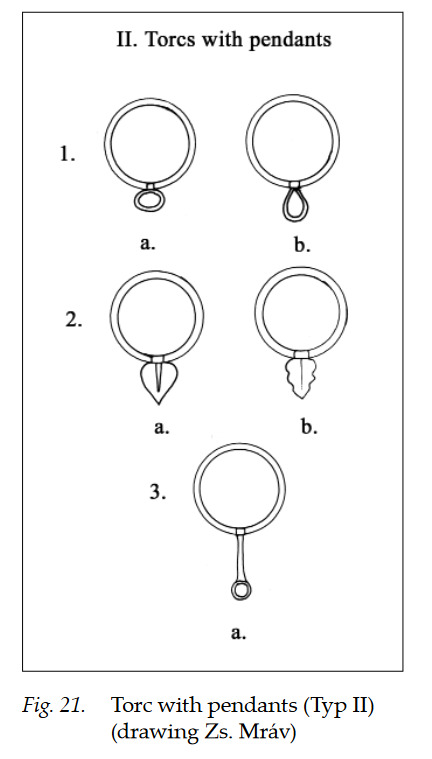


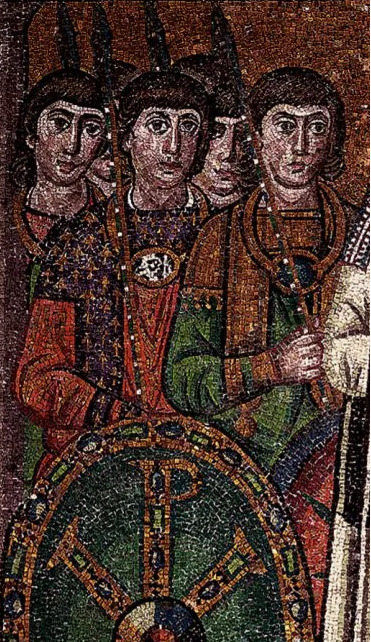

“Maniakion – The golden torc in late Roman and early Byzantine Army” by Zsolt Mráv
love to see R*mans getting barbarized
4 notes
·
View notes
Text


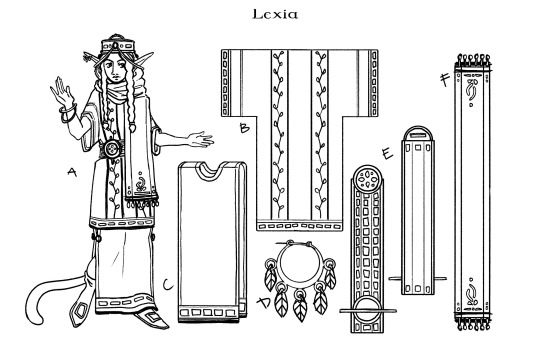

clothing concept design for the four countries that make up the elven population in my fantasy world, inspired by a mix of Norman, Celtic, Byzantine, early Christian cultural dress styles
#concept design#clothing design#dress styles#fantasy costume#fantasy concept art#concept art#elves#elf#galdre isles#agon#lexia#canatha#vanetia#byzantine#norman#celtic#early christian#medieval fashions
11 notes
·
View notes
Text
Seven churches have been found in the city from the early Christian era. Now, four inscriptions are newly discovered in one of its ancient churches – the Martyrion of Theodoros, or “Burnt Church”.
From a mosaic prominently positioned in the entrance hall of the church, for instance, we learn of Megas the “most holy bishop,”
An inscription in the side chapel reads: “Offering in favor of salvation and succor for Urania and Theodoros. Lord God, accept! Amen! In the time of indiction 4 and year 619
The Burnt Church was adorned with mosaic carpets and inscriptions. But the art and language in its mosaics were of mediocre quality.
Yet while the mosaics are somewhat crude, the images brim with Christian symbolism. On the church floor, a crowded mosaic shows 12 baskets – each holding five pieces of bread or five fruits (it’s hard to say). These would represent the 12 baskets left following Jesus’ miracle of Feeding the Multitude next to the Sea of Galilee. (Eisenberg shares their apprehension that more than 12 baskets would be found as excavations continued. So far, so good.) Mosaics in the church, down the nave and in the apse, features fish.
#history#archeology#archeologicalsite#discovery#byzantine#church#christian art#christian#ancient#early christianity
2 notes
·
View notes
Text
[Original date: 5 July 2016]
The more I write, the more I feel that “Oh, but it’s a fantasy world! You’re not actually depicting any real cultures” is not at all useful or productive. For one, if you can’t see the connections between things like Lord of the Rings or A Song of Ice and Fire and medieval Europe, I don’t know what to say to you. They are not direct depictions, but they are very, very evidently rooted in history and culture—and the baggage that comes with them.
It’s true that the connecting fibers are much thinner for some works than others, but while most are not on quite the scale of Middle-earth or Westeros, many follow in that kind of tradition. Speaking as a writer—in my day job (such as it is), I study early modern and eighteenth century British literature, and my interest in those periods constantly pervades my fiction. I did as much historical research for the first chapter of my fantasy novel as for straightforward historical fiction, because many aspects absolutely are drawn straight from history.
At the same time, of course, it is a fantasy and a secondary world, and those are never going to be directly equivalent.
For instance, ASOIAF is obviously and unabashedly inspired by the Wars of the Roses, enacted across a continent rather than one small island, but the Starks and Lannisters are not simply fantasy versions of the Yorks and Lancasters. During the Wars of the Roses, both families were Plantagenets, branches of the royal house of England with rival claims to the throne. In ASOIAF, neither the Starks nor Lannisters have any direct claim to the Iron Throne at all—we see the Plantagenet vs Plantagenet dynamic more with the deposed Targaryens vs their Baratheon cousins who won the previous phase of the conflict.
The Baratheons’ ebullient warrior-king, Robert, is probably most comparable to Edward IV, and his beautiful, ambitious wife to Elizabeth Woodville. However, Cersei Lannister is altogether a wilder, more amoral figure than Elizabeth, and Robert marries her out of political expediency rather than Edward’s passion for the unsuitable Elizabeth. Also unlike Elizabeth, Cersei triumphs over the austere northern lord who would strip power from her and her children, where Elizabeth lost the immediate battle to Richard of Gloucester—a far more ambiguous figure than Ned Stark.
In character, Cersei is perhaps more akin to the Lucrezia Borgia of legend, if not history. She comes with an ambitious, highly intelligent father who ruthlessly uses all his children (Tywin Lannister/Alexander VI), an incestuous brother-lover locked into an order that denies him an inheritance (Jaime Lannister/Cesare Borgia), and a second, widely loathed brother (Tyrion Lannister/Juan Borgia).
The parallels aren’t exact there, either, though. Cesare’s strategic and administrative brilliance goes to Tyrion, Lucrezia’s overriding loyalty to her family at odds with (in the fictionalized versions) a burgeoning conscience goes to Jaime, and Juan’s incompetent, wild recklessness goes to Cersei.
As far as Wars of the Roses analogues go, Daenerys Targaryen’s place seems to draw nearest to Henry Tudor, Earl of Richmond, the future Henry VII. Daenerys and Henry are, respectively, exiled survivors of the deposed branches of the royal family (Targaryen/Lancastrian) who, with local and foreign support, return to reclaim the kingdom. Yet Daenerys is wildly dissimilar from Henry. Even her claim to the throne differs. Where Daenerys is the only surviving, legitimate child of the old king, Henry’s Lancastrian heritage came through an illegitimate and female line, and he had a prudent, restrained personality in general, more like—say, Jon Snow.
That’s ASOIAF. If you jump to Tolkien, it’s not surprising that he linked Gondor to the Byzantine Empire in its decline. Like the Byzantine Empire, Gondor is the surviving half of a once-towering empire, holding on while the other half (Arnor/Holy Roman) loses its territory and decays into little states and feuding communities. The Battle of the Pelennor Fields has striking parallels to the fall of Constantinople, and Tolkien directly referred to Minas Tirith as a take on Constantinople.
Yet again, the parallels are not 1:1, even setting aside the basic fact that it turns out completely differently. Denethor is at most a tragic inversion of Emperor Constantine, but even that seems a stretch. His sons, Boromir and Faramir, don’t plug into any particular historical figures, and the faithful Rohirrim don’t exactly map onto anyone despite their clear Germanic inspiration.
Gondor is also heavily inspired by various regions of Italy, complete with internal strife and ruling princes who have discretion about sending armies to the Pope Steward to defend Rome Minas Tirith. Tolkien insisted that the rejuvenated Gondor at the end of LOTR is not Northern European, but essentially a restored Roman Empire with its seat at Rome. He identified various areas of Italy as the real life counterparts to Gondor, most notably Venice/Pelargir and Assisi/Lossarnach.
However, Gondor is geographically far larger than Italy, large enough to extend to Greece and Turkey, and has influences from ancient Egypt as well. The Egyptian influence lies not only in Gondor’s embalming practices but their massive monuments, their religion (which also has Jewish influences), royal imagery (especially with regard to the crown), and the general trends of Gondorian culture.
None of these, of course, are perfect models of reference—though at least you could legitimately argue that the films’ casting choices for Gondorian Dúnedain weren’t actually accurate to “Tolkien’s vision,” as is often claimed. But these are probably the most recognizable models for Gondor, with strong connections to history—and even with those, the references are multi-layered and flexible.
Essentially: this particular genre of quasi-historical fantasy absolutely draws from real history, sometimes closely, sometimes less so, which makes it perfectly possible to talk about accuracy, appropriation, and so on, in the context of fantasy. At the same time, it’s complicated by the fact that references are never direct and are worked out in the context of their own stories—a complication that is silenced rather than addressed by dismissing the relevance of history.
#isabel talks#artist: jrr tolkien#text: middle earth#sff chatter#the glacier speaks#korë blogging#long post#history: western medieval#history: byzantine#history: ancient egypt#history: western early modern#ch: robert baratheon#ch: cersei lannister#ch: eddard stark#ch: lucrezia borgia#ch: cesare borgia#ch: juan borgia#ch: pope alexander vi#ch: tyrion lannister#ch: jaime lannister#ch: tywin lannister#ch: daenerys targaryen#ch: denethor ii#artist: george rr martin#text: asoiaf#academic chatter
3 notes
·
View notes
Text
And speaking of 40K I've been doing a bit of work on my takes on Loyalist Iron Warriors:
One of the little details I work into it is that the Iron Warriors of M31 to the earliest years of the Imperium take names from Classical Greece, by the time of M35-41 they start using Byzantine names and thematic elements, down to relabeling the Trident the Themes, adopting surnames, and in a way not so much taking on aspects of the classical Rome-inspired Ultramarines as an excuse to write Iron Warriors with various aspects of the Byzantine Empire's culture and all that went with it.
The Byzantines are an aspect of Greek heritage and culture much more related to modern Greece than to that of Pericles, and it is a way to showcase how Basileus Perturabo of M41, master of the greatest Legion among the Astartes and his Themes-Tagmata-Turmae have evolved in a span of 10,000 years from their predecessors. Also since this is still 40K the loyalist Imperium has much of its canon counterpart's paranoid backbiting murderous traits and these stem from the Iron Warriors, as the mirror of the Imperial Fists, taking on the Ultramarines' canon role of the lion's share of Astartes and neatly telling Roboute in quasi-death and living to take his Codex and shove it and doing what they want.
I don't want loyalist Iron Warriors to be Imperial Fists with Hazard Stripes, and I want them to showcase that the Long War has changed them, much as Rome changed from the days of Actium when the future Byzantine provinces were the Greek-Syriac-Coptic territories and then when they became a state in their own right.
#warhammer 40k fic#loyalist iron warriors#some of them start using those names very early on#but it only catches on with the entire Legion by M41#that's how you get 30K era Iron Warriors with names like Thucydides and Themistocles and Leonidas and their 40K counterparts well...#they end up with names like Basil and Konstantinos and Andronicus and surnames that are distinctly modeled on those of Byzantines
3 notes
·
View notes